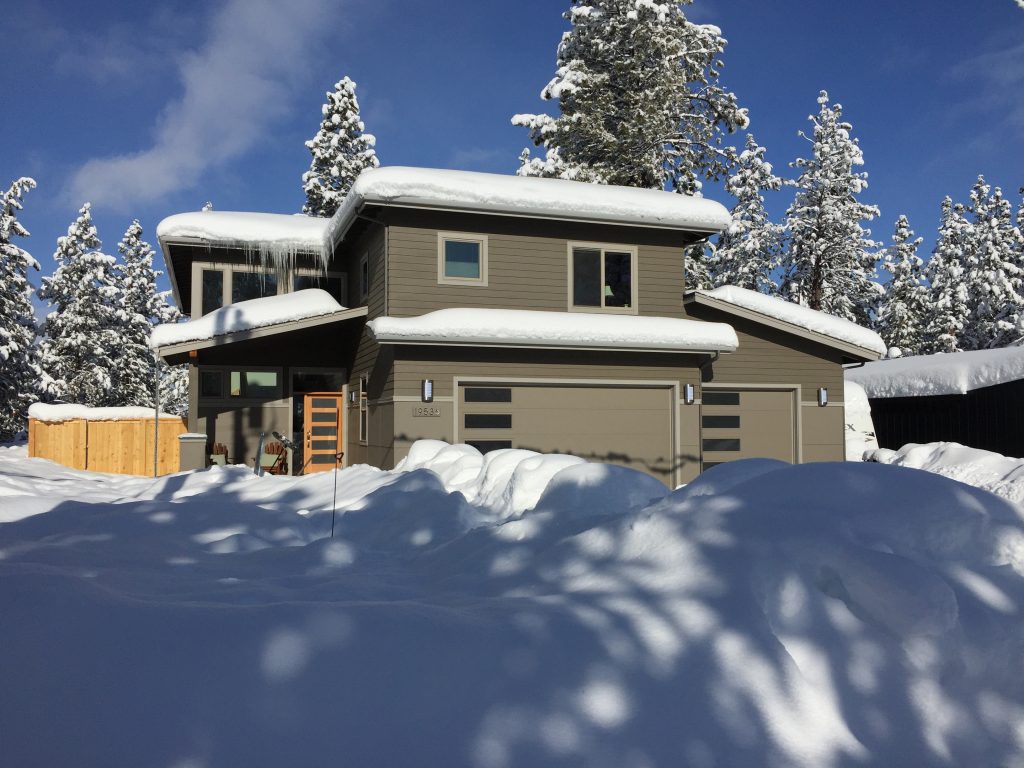
With the record snowfall Winter we had in 2017 here in Central Oregon, many homeowners were surprised to see how many leaks due to ice dams and roof failures happened all over town. As a custom home builder I had quite a few phone calls from people asking for information about what to do when heavy snow loading became an issue. Some homes seemed to be doing fine, while others started having real problems. Why was this happening? Aren’t all roofing systems designed to handle snow load around here? As the snow continued to pile up, the quality differences in roof construction around town became more and more apparent.
Personally I have been a fan of “ice and water shield” roofing underlayment for many years. Skyline Custom Homes installs this product on all of our new construction projects, whether customers request it specifically or not. What does ice and water shield do? It’s an adhesive backed roofing underlayment product, that sticks to plywood roof sheeting and prevents water from getting into attic spaces in the event of an ice dam. Over the years many low cost / low quality builders have chosen to save money by not installing this product, instead just using standard roofing underlayment. Standard roofing underlayment works fine most of the time, the problem is it won’t handle water flow that occurs when melting snow runs down a roof and hits an ice dam. The low quality builder saves money in the short term, but in the long term when we have a big snow year it can be a real problem for homeowners having to deal with water leakage issues. As a standard practice, we install ice and water shield at a minimum 4-6′ up all roof eaves and overhangs, valleys, and sidewalls where water flow may be encountered. For lower pitch roofs, we will often cover the entire roof area with this product and will pay special attention to areas like side-wall flashings and valleys where water intrusion may be a concern. It costs a little more, but having that extra layer of protection provides peace of mind and savings over the long term!
Please Contact Us if you would like more information on roofing systems for new homes.
